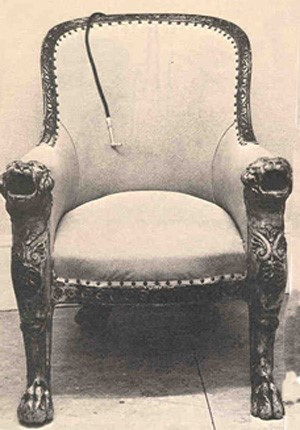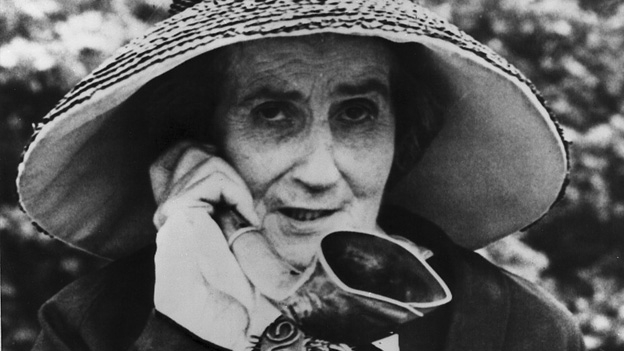Thursday morning, I gave the opening keynote at an event about the future of commerce at the Rotman School of Management in Toronto. I shared four insights:
- The AI instinct is to view a reasoning problem as a data problem
- Marketing hype leads many to imagine that artificial intelligence (AI) works like human brain intelligence. Words like “cognitive” lead us to assume that computers think like we think. In fact, succeeding with supervised learning, as I explain in this article and this previous post, involves a shift in perspective to reframe a reasoning task as a data collection task.
- Advances in deep learning are enabling radical new recommender systems
- My former colleague Hilary Mason always cited recommender systems as a classic example of a misunderstood capability. Data scientists often consider recommenders to be a solved problem, given the widespread use of collaborative filtering, where systems infer person B’s interests based on similarity with person A’s interests. This approach, however, is often limited by the “cold start” problem: you need person A and person B to do stuff before you can infer how they are similar. Deep learning is enabling us to shift from comparing past transactional history (structured data) to comparing affinities between people and products (person A loves leopard prints, like this ridiculous Kimpton-style robe!). This doesn’t erase the cold start problem wholesale, but it opens a wide range of possibilities because taste is so hard to quantify and describe: it’s much easier to point to something you like than to articulate why you like it.
- AI capabilities are often features, not whole products
- And yet, however amazing it is that we’ll soon all have the imaginative superpowers of the best interior designers, visualizing how a lamp will look in our home before we buy it, AI tools like FashionAI are only parts of a business process, not full products. One reason why AI hype is overblown is that we underestimate what it takes to solve an end-to-end problem. The best AI products out there have a capability like deep learning at their core, but are supplemented by workflows or other standard software capabilities. I like Andrei Karpathy’s take on software 2.0, but it is incomplete.
- AI will dampen the moral benefits of commerce if we are not careful
- Adam Smith is largely remembered for his theories on the value of the distribution of labor and the invisible hand that guides capitalistic markets. But he also wrote a wonderful treatise on moral sentiments where he argued that commerce is a boon to civilization because it forces us to interact with strangers; when we interact with strangers, we can’t have temper tantrums like we do at home with our loved ones; and this gives us practice in regulating our emotions, which is a necessary condition of rational discourse and the compromise at the heart of teamwork and democracy. As with many of the other narcissistic inclinations of our age, the logical extreme of personalization and eCommerce is a world where we no longer need to interact with strangers, no longer need to practice the art of tempered self-interest to negotiate a bargain. Being elegantly bored at a dinner party can be a salutatory boon to happiness. David Hume knew this, and died happy; Jean-Jacques Rousseau did not, and died miserable.

An elderly couple approached me after the talk. I felt a curious sense of comfort and familiarity. When I give talks, I scan the audience for signs of comprehension and approval, my attention gravitating towards eyes that emit kindness and engagement. On Thursday, one of those loci of approval was an elderly gentleman seated in the center about ten rows deep. He and his Russian companion had to have been in their late seventies or early eighties. I did not fear their questions. I embraced them with the openness that only exists when there is no expectation of judgment.
She got right to the point, her accent lilted and slavic. “I am old,” she said, “but I would like to understand this technology. What recommendations would you give to elderly people like myself, who grew up in a different age with different tools and different mores (she looked beautifully put together in her tweed suit), to learn about this new world?”
I told her I didn’t have a good answer. The irony is that, by asking about something I don’t normally think about, she utterly stumped me. But it didn’t hurt to admit my ignorance and need to reflect. By contrast, I’m often able to conjure some plausible response to those whose opinion I worry about most, who elicit my insecurities because my sense of self is wrapped up in their approval. The left-field questions are ultimately much more interesting.
The first thing that comes to mind if we think about how AI might impact the elderly is how new voice recognition capabilities are lowering the barrier to entry to engage with complex systems. Gerontechnology is a thing, and there are many examples of businesses working to build robots to keep the elderly company or administer remote care. My grandmother, never an early adopter, loves talking to Amazon Alexa.
But the elegant Russian woman was not interested in how the technology could help her; She wanted to understand how it works. Democratizing knowledge is harder than democratizing utility, but ultimately much more meaningful and impactful (as a U Chicago alum, I endorse a lifelong life of the mind).
Then something remarkable happened. Her gentleman friend interceded with an anecdote.
“This,” he started, referring to the hearing aid he’d removed from his ear, “is an example of artificial intelligence. You can hear from my accent that I hail from the other side of the Atlantic (his accent was upper-class British; he’d studied at Harvard). Last year, we took a trip back with the family and stayed in quintessential British town with quintessential British pubs. I was elated by the prospect of returning to the locals of my youth, of unearthing the myriad memories lodged within childhood smells and sounds and tastes. But my first visit to a pub was intolerable! My hearing aid had become thoroughly Canadian, adapted to the acoustics of airy buildings where sound is free to move amidst tall ceilings. British pubs are confined and small! They trap the noise and completely bombarded my hearing aid. But after a few days, it adjusted, as these devices are wont to do these days. And this adaptation, you see, shows how devices can be intelligent.”
Of course! A hearing aid is a wonderful example of an adaptive piece of technology, of something whose functionality changes automatically with context. His anecdote brilliantly showed how technologies are always more than the functionalities they provide, are rather opportunities to expose culture and anthropology: Toronto’s adolescence as a city indexed by its architecture, in contrast to the wizened wood of an old-world pub; the frustrating compromises of age and fragility, the nostalgic ideal clipped by the time the device required to recalibrate; the incredible detail of the personal as a theatrical device to illustrate the universal.
What’s more, the history of hearing aids does a nice job illustrating the more general history of technology in this our digital age.
Partial deafness is not a modern phenomenon. As everywhere, the tools to overcome it have changed shape over time.

One thing that stands out when you go down the rabbit hole of hearing aid history is the importance of design. Indeed, historical hearing aids are analogue, not digital. People used to use naturally occurring objects, like shells or horns, to make ear trumpets like the one pictured in the featured image above. Some, including 18th-century portrait painter Joshua Reynolds, did not mind exposing their physical limitations publicly. Reynolds was renowned for carrying an ear trumpet and even represented his partial deafness in self-portraits painted later in life.

Others preferred to deflect attention from their disabilities, camouflaging their tools in the environment or even transforming them into signals of power. At the height of the Napoleonic Age, King John VI of Portugal commissioned an acoustic throne with two open lion mouths at the end of the arms. These lion mouthes became his makeshift ears, design transforming weakness into a token of strength; Visitors were required to kneel before the chair and speak directly into the animal heads.

The advent of the telephone changed hearing aid technology significantly. Since the early 20th century, they’ve gone from being electronic to transistor to digital. Following the exponential dynamics of Moore’s Law, their size has shrunk drastically: contemporary tyrants need not camouflage their weakness behind visual symbols of power. Only recently have they been able to dynamically adapt to their surroundings, as in the anecdote told by the British gentleman at my talk. Time will tell how they evolve in the near future. Awesome machine listening research in labs like those run by Juan Pablo Bello at NYU may unlock new capabilities where aids can register urban mood, communicating the semantics of a surrounding as opposed to merely modulating acoustics. Making sense of sound requires slightly different machine learning techniques than making sense of images, as Bello explores in this recent paper. In 50 years time, modern digital hearing aids may seem as eccentric as a throne with lion-mouth ears.
The world abounds in strangeness. The saddest state of affairs is one of utter familiarity, is one where the world we knew yesterday remains the world we will know tomorrow. Is the trap of the filter bubble, the closing of the mind, the resilient force of inertia and sameness. I would have never included a hearing aid in my toolbox of metaphors to help others gain an intuition of how AI works or will be impactful. For I have never lived in the world the exact same way the British gentleman has lived in the world. Let us drink from the cup of the experiences we ourselves never have. Let us embrace the questions from left field. Let each week, let each day, open our perspectives one sliver larger than the day before. Let us keep alive the temperance of commerce and the sacred conditions of curiosity.
The featured image is of Madame de Meuron, a 20th-century Swiss aristocrat and eccentric. Meuron is like the fusion of Jean des Esseintes-the protagonist of Huysman’s paradigmatic decadent novel, À Rebours, the poisonous book featured in Oscar Wilde’s Picture of Dorian Gray-and Gertrude Stein or Peggy Guggenheim. She gives life to characters in Thomas Mann novels. She is a modern day Quijote, her mores and habits out of sync with the tailwinds of modernity. Eccentricity, perhaps, the symptom of history. She viewed her deafness as an asset, not a liability, for she could control the input from her surroundings: “So ghör i nume was i wott! - So I only hear what I want to hear!”

Insightful, entertaining and simply a delightful read.
LikeLike